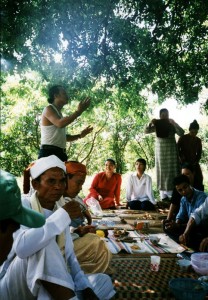Vietnam Heritage, No 9, December 2011
The Cham people of today are matriarchal, so women propose to men and men live in their wives’ houses. It is the other way round for Kinh Vietnamese. Even as recently at 1928 it was the man who proposed in Cham marriage. In the book Le Royaume du Champa (The Cham Kingdom, Paris, 1928), French author G. Maspéro wrote: ‘Cham people’ marriages are arranged with the help of a broker who brings some gold, silver and two jars of wine to the woman’s house to propose marriage.’ Continue reading

